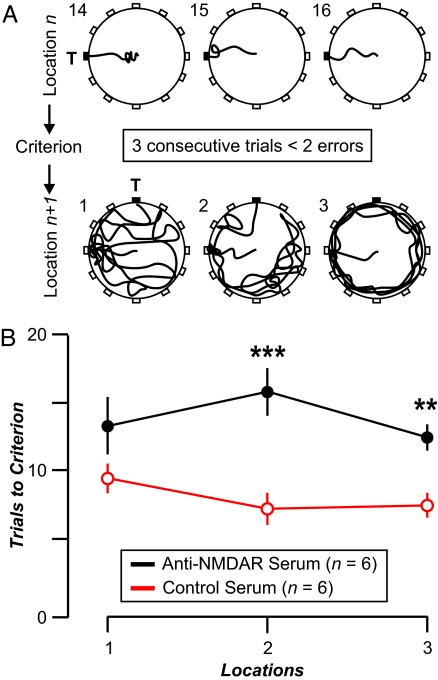Fig. 3.
Memory impairment in mice injected with serum containing anti-NMDAR Abs and given LPS. The animals show a deficit in the flexible memory task that requires them to find sequential escape targets in the wet maze. Each target is in a fixed position until the mouse finds it with less than two errors in each trial for three consecutive trials, then a new target position is selected. (A) Each circle depicts a top view of the paddling maze with water added to a shallow depth (2 cm). Holes are located in the perimeter, but only the target (T) offers escape. In each diagram, the navigation paths (thick lines) correspond to a mouse (with serum containing anti-NMDAR Ab) moving from the start (center of maze) to the target. (Upper) Trials 14, 15, and 16 (numbers at top left) with the target at 9:00; the mouse finds it with no errors in each trial, thus reaching criterion. (Lower) Trials 1, 2, and 3 with the target in a new location (12:00). It is clear that the errors increase dramatically and that the animal makes numerous visits to the old target, which is now incorrect. (B) Spatial flexibility, measured as trials to criterion, for mice in locations 1 (P = 0.108), 2 (P = 0.004), and 3 (P = 0.01). ∗∗, P < 0.01; ∗∗∗, P < 0.001; Mann–Whitney U tests. Overall effect from all locations, P = 0.001.

